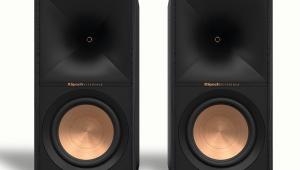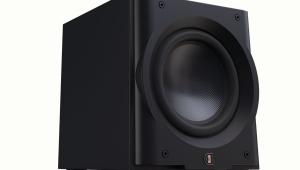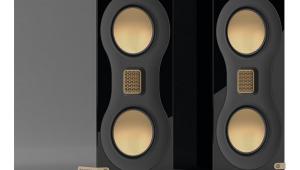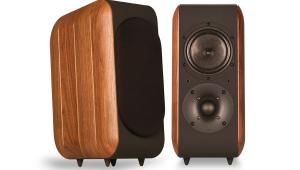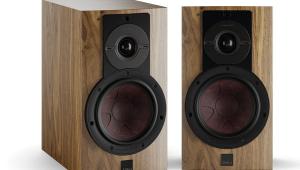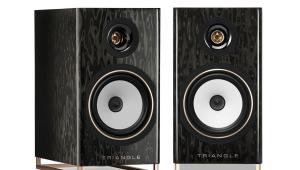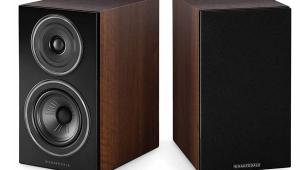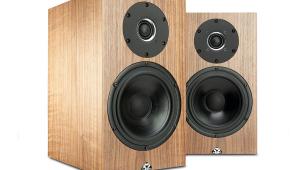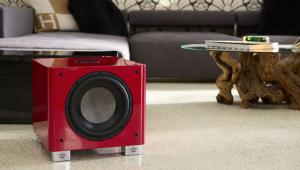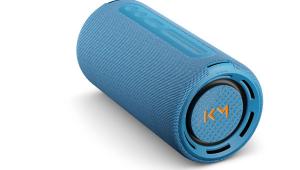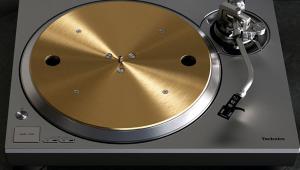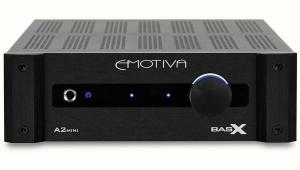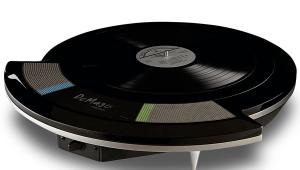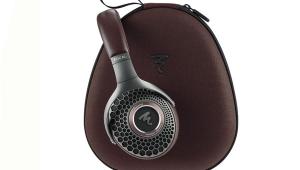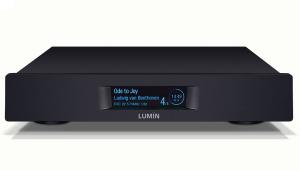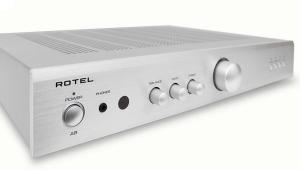Cambridge Audio Aero 6 - £650
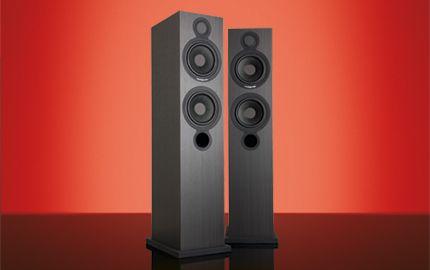
Back in the November 2013 issue (377) we reviewed the £350 Cambridge Audio Aero 2 standmount loudspeaker. The Aero 6 is a larger, floorstanding version of the same design, deploying identical drive units with the far larger cabinet volume that comes from having a big box that sits securely on terra firma!
Many will expect the Aero 6 to be better, then; after all, it’s nearly twice the price and has far more air inside its capacious cabinet. Trouble is, in doing a floorstanding version of a smaller standmount speaker, you open yourself up to a problem that’s never easily solved, especially in budget designs, which is how to keep the cabinet under control. The thing is, that bigger box might let the bass driver move air easier, but there’s also the worry that it will also move the cabinet. This is the nub of the problem for any larger loudspeaker – how to keep those expanses of timber from flexing and resonating in time to the music, sullying the sound.
On a small box like the Aero 2, this isn’t such a big problem, as there’s less of it. But the Aero 6 sports two 165mm bass units producing a lot more energy than the 2’s single, identically sized driver, and has a whopping great (in relative terms) box to keep in line. The performance of the bigger box is a real issue that will ultimately determine the success or failure of the speaker.
Cambridge Audio’s Aero series does something very smart that confers it a significant advantage in terms of sound – it uses a single 46mm BMR driver to take care of treble and midband frequencies. The aforementioned device works from 250Hz all the way up to 22kHz, and it gives the Aero a theoretical edge – namely that the crossover point of the loudspeaker is a good long way from where the ear is most sensitive, in the 1 to 2kHz region. This is precisely where most other two-way speakers cross over, so by shunting the crossover point down the frequency band, the sticky bit where the bass driver kicks in is nowhere near as subjectively problematic. And cleverly, the BMR handles mid and treble frequencies, leaving the most hard working part of the package – the woofer(s) – to get on with playing the bass, without having to worry about the midband as well.
And that’s before you even consider how the BMR works; its excellent natural dispersion pattern comes from the fact that it creates much of its sound from surface vibration, in addition to conventional in-out pistonic motion. This means it diffuses around the room more easily and doesn’t have any sort of obvious ‘sweet spot’ like conventional tweeters. I found it worked exceptionally nicely in the Aero 2; not only is it well integrated with the bass driver, but it is the latest version of the BMR, which no other manufacturer is currently using.
Those twin bass units both feature paper cones. Having experimented for years with cone materials, designer Dominic Baker is now a fan of certain types of paper pulp in speaker cones; he says these have a great combination of stiffness and lightness that other materials can’t match. A single large reflex port lets the twin woofers breathe, firing forward into the room. The MDF cabinet has a choice of black or dark walnut finishes, and you won’t find bi-wirable binding posts round the back because Dominic doesn’t think they offer an acceptable cost/benefit.
Sound quality
Often, moving from a small standmount to a big floorstander creates more problems than it solves, but the Aero 6 emerges as the better of the two speakers in my view. Cleverly, you get all the benefits of having two woofers pumping away shifting air, but none of the pitfalls of having a bigger cabinet to keep in check. And fascinatingly, the benefits don’t simply manifest themselves as better bass, you also get improvements right up the frequency band. Treble seems a little more relaxed and tuneful, midband is easier, more effortless and more dynamic and, of course, bass is far bigger booted.
Still, this is very much an Aero loudspeaker; both the 2 and the 6 sound like nothing else around at the price, and that’s meant in a good way. Their baseline is a wonderfully expansive sound, one that’s tonally extremely even and devoid of peaks and troughs. At first listen, this can manifest itself as being slightly over-smooth, but give it a few minutes and as soon as you’ve realised it’s not going to shout at you, you find yourself listening further into the music. The Aeros begin to sound very immersive, and the floorstanders seem to exacerbate this effect, pulling you further into the sound.
Rhythmically, because there’s no coruscating treble coming at you, or clanging midband, you can on first appraisal mistake the smoothness and evenness for a slight lack of bite. But you soon realise that these speakers are as fast as anything at or near the price, it’s just that they’re not crashing their way through the music. You get into a zone, where you can enjoy their natural musicality and effortless ease. It’s actually rather hard to describe, because so few speakers do this – possibly Quad electrostatics and Martin Logan hybrids at the top end of the market, but not many others. The sound coming from the Aero 6s is simply different to almost all other speakers on the market in one respect, thanks to that seamless BMR treble/mid driver and the way it is used. Meanwhile, those twin bass units marry up superbly and make it a delightful listen.
I found that the Aero 2s had a slight lack of atmosphere right at the very top, but the 6s are less guilty of this. Treble isn’t as incisive as Q Acoustics’ 2050i, for example, but it has a lovely floaty quality that means hi-hats are carried with super timing. On The The’s I’ve Been Waiting, it’s unusually easy to hear the interaction between the bass, snares and cymbals and this becomes a really key part of the song. Behind this Matt Johnson’s plaintive vocals soar, giving the song an epic feel. At the same time, loads of detail is thrust out stage left and right, from guitar licks to backing synths. The effect is powerful, engrossing even, yet tonally it’s as smooth as silk – not something you can say of most budget speakers.
For a £650 box, the Aero 6s can shift large amounts of air. They’re very efficient, seemingly able to produce high sound pressure levels with a watt or two – making them ideal for low-powered Class A and/or tube amps. I am amazed by the easy way they fill my listening room with vast swathes of sound. Camel’s Three Wishes is a suitably expansive soundtrack to this, the Aeros firing wide to the extremities of my large listening room, seemingly untroubled by any lack of headroom, even at high levels. The texture of the shimmering backing synths and crisp guitar come over convincingly, and are played together in perfect time. As with the Aero 2s, bass isn’t the tightest and tautest you’ll ever hear, but the supplied foam bungs help to tighten things up, as does careful placement and firm spiking into your floor. Still, this slight looseness is more than compensated for by their wonderfully effortless nature; this sound is as close to big three-way loudspeakers as you’ll get this side of £1,000, or more.
Conclusion
No less distinguished than its smaller £350 brother, the Cambridge Audio 6 is an unusual sounding loudspeaker – in a very positive way. It is one of the most refined, svelte and smooth-sounding floorstanders you can buy without breaking the bank, and has a easy, unflappable quality that makes music in a beguilingly natural way. The extra woofer and umpteen additional litres inside the cabinet simply make the speaker more dynamic and less stressed across the midband, making it an even smoother operator. It also adds an extra octave of bass for good measure, without falling into the trap of so many rivals that substitute quality for quantity. One of the finest affordable floorstanders you’ll hear, make sure you audition it now
LIKE: Wonderfully smooth, open, even sound; scale; musicality
DISLIKE: Finish not as lavish as some rivals
WE SAY: Superb affordable floorstander that’s civilised way beyond its price
DETAILS
PRODUCT Cambridge Audio Aero 6
ORIGIN UK/China
TYPE Floorstanding loudspeaker
WEIGHT 16.9kg
DIMENSIONS (WxHxD) 338 x 980 x 240mm
FEATURES
• 1x 46mm BMR treble/mid driver
• 2x 165mm paper bass driver
• Quoted power handling: 25-120W
• Quoted sensitivity: 90dB/1W/1m
• Quoted frequency response: 30Hz-22kHz (+/- 3dB)
DISTRIBUTOR
Cambridge Audio
WEBSITE cambridgeaudio.com
 |
Inside this month's issue:
Ruark R610 music system and Sabre-R standmount speakers, PMC twenty.23i Active, floorstanders, English Acoustics Downton preamplifier, Bluesound NODE ICON preamp/streamer, Ortofon Concorde Music Blue MM cartridge and much, much more
|
